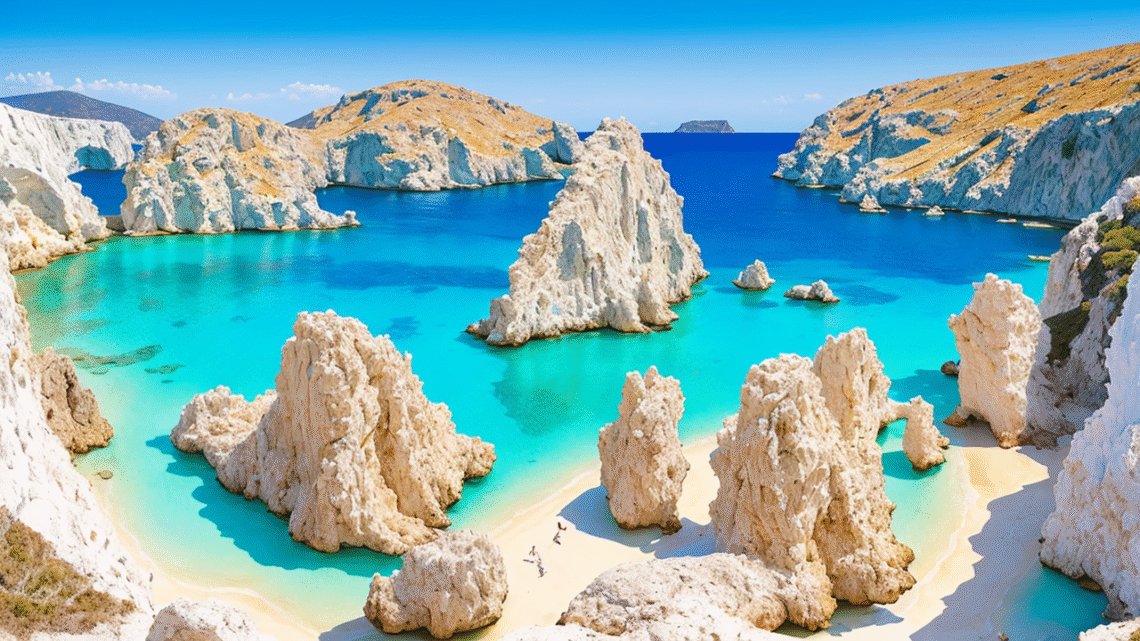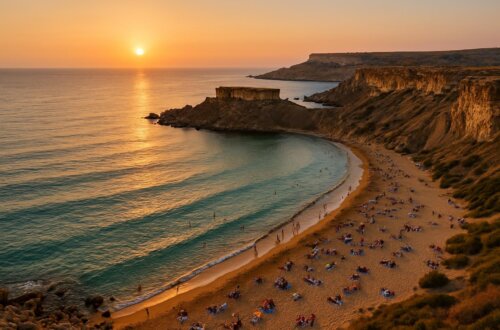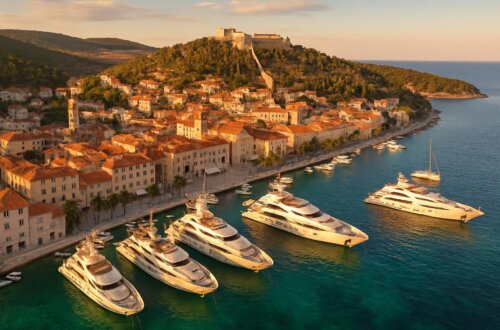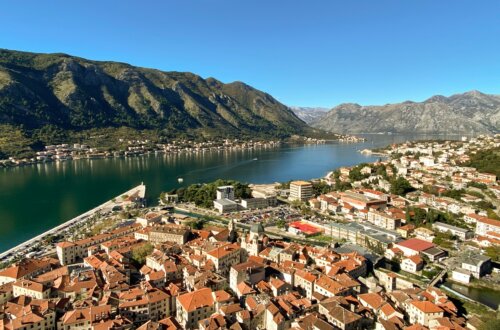
Best Things to Do in Milos: A Complete Travel Guide
Best Things to Do in Milos: A Complete Travel Guide
Introduction to Milos Island
Milos is one of those islands that makes you fall in love at first sight. Unlike the busier Santorini or Mykonos, Milos has a quieter charm that feels authentic yet magical. Tucked away in the southwestern corner of the Cyclades, this volcanic island is blessed with surreal landscapes, crystal-clear waters, charming fishing villages, and a rich history that dates back thousands of years.
Why Milos Stands Out in the Cyclades
The Cyclades archipelago has more than 200 islands, but Milos has something truly unique: diversity. Known as the “Island of Colors,” Milos owes its beauty to volcanic origins. You’ll find white cliffs that look like they came from another planet, caves carved out by the sea, sandy shores framed by turquoise waters, and colorful fishing houses called syrmata hugging the coast. Unlike the overly crowded tourist hubs, Milos still offers a sense of discovery.
One of the most iconic facts about Milos is that the famous statue of Venus de Milo—now housed in the Louvre Museum—was discovered here in 1820. That alone shows how historically significant this small island has been throughout the centuries.
Quick Facts About Milos
- Location: Southwestern Cyclades, Greece
- Best known for: Beaches, caves, colorful fishing villages, Venus de Milo
- Size: Around 160 square kilometers
- How to get there: By ferry from Athens (Piraeus) or by plane from Athens International Airport
- Ideal trip length: 4–7 days
Exploring the Unique Beaches of Milos
If there’s one reason travelers keep coming back to Milos, it’s the beaches. The island boasts more than 70 different beaches, each with its own personality. Some are hidden and adventurous, while others are family-friendly and calm.
Sarakiniko Beach – The Lunar Landscape
Sarakiniko is Milos’ superstar, the beach that makes every traveler’s jaw drop. Imagine walking on white volcanic rock that looks like the surface of the moon, with deep blue waters crashing below. It’s not a sandy beach but rather a natural wonder sculpted by time and wind. The smooth rocks create natural slides and pools, making it a playground for both adults and children.
What makes Sarakiniko extra special is how photogenic it is. Sunrise and sunset transform the entire landscape into shades of pink, orange, and gold. Many travelers even say Sarakiniko is one of the most unique beaches in the entire world.

Kleftiko Caves – A Sailing Paradise
Accessible only by boat, Kleftiko is a place you’ll never forget. This former pirate hideout is a natural wonder of sea caves, arches, and towering rock formations surrounded by turquoise waters. The name “Kleftiko” means “hideout,” as pirates once used these caves to ambush ships.
Today, it’s a paradise for snorkeling and swimming. Most boat tours include stops here, giving you a chance to explore hidden caves by dinghy or kayak. Floating in crystal-clear water while looking up at towering white cliffs is an experience you’ll treasure forever.

Firopotamos & Mandrakia – Fishing Villages by the Sea
If you want a picture-perfect Greek postcard, head to Firopotamos or Mandrakia. These tiny fishing villages are lined with colorful boathouses right by the water. Known as syrmata, these houses were traditionally used by fishermen to store boats on the ground floor while living upstairs.
Firopotamos also has a small sandy beach, making it perfect for a swim after strolling through the village. Mandrakia, on the other hand, is a fantastic spot for fresh seafood with tavernas serving catch-of-the-day right by the water.
Tsigrado & Fyriplaka – Adventure Beaches
For the adventurous souls, Tsigrado is a hidden treasure. To reach it, you’ll need to climb down ropes and ladders through a narrow passage, but the reward is a secluded bay with crystal-clear waters and dramatic cliffs. It’s not for everyone, but if you love adventure, Tsigrado is a must.
Just next door, Fyriplaka offers a much larger sandy beach with colorful cliffs in shades of red, orange, and yellow. It’s one of the best places for sunbathing and swimming, making it a favorite among families and couples alike.
Historical and Cultural Experiences
Beyond the beaches, Milos is rich in history and culture. From ancient theaters to Christian catacombs, the island tells stories that stretch across millennia.
The Ancient Theater of Milos
Located near the village of Tripiti, the Ancient Theater of Milos dates back to the Hellenistic period and was later expanded by the Romans. With stunning views over the Aegean Sea, the theater once hosted performances for up to 7,000 spectators.
Walking through the marble seating area, you can almost imagine the ancient plays and gatherings that took place here. Today, the theater sometimes hosts cultural events, reviving its historic role as a hub for art and performance.
Catacombs of Milos – A Glimpse into Early Christianity
The Catacombs of Milos are among the most significant early Christian monuments in Greece. Dating back to the 1st–5th centuries AD, they served as burial sites and places of worship for the island’s first Christians.
Wandering through the underground passages, you’ll find carved tombs, inscriptions, and chambers that reveal how early Christians practiced their faith during times of persecution. This is one of those places where history feels alive beneath your feet.

Milos Mining Museum – Tracing the Island’s Industrial Past
Milos isn’t just about beaches and villages—it also has an industrial side. The island has been mined since ancient times for obsidian, sulfur, and other minerals. The Mining Museum in Adamas provides an in-depth look at this history with exhibits showcasing tools, photographs, and geological treasures.
It’s fascinating to see how natural resources shaped the economy and culture of Milos throughout history. For geology enthusiasts, it’s a must-visit.
Venetian Castle of Plaka
At the top of Plaka, the island’s capital, stands the Venetian Castle, built in the 13th century. Though only ruins remain, the site offers one of the best panoramic views of the island. Watching the sunset from here is a magical experience, as the sky turns golden and the Aegean glows in the fading light.
Villages and Traditional Life
Milos’ villages are as charming as its beaches. Each one has its own character, offering a glimpse into traditional Cycladic life.
Plaka – The Charming Capital of Milos
Plaka is the heart of Milos, a whitewashed village perched on a hill with winding alleys, traditional tavernas, and boutique shops. Unlike bustling Mykonos Town or Oia in Santorini, Plaka feels calm and authentic.
The village is perfect for a leisurely evening stroll. Narrow streets filled with bougainvillea lead you to cozy cafes and family-run restaurants. Plaka is also famous for its sunset views—many say it rivals Santorini without the crowds.
Klima – Colorful Syrmata Houses
Klima is one of the most photographed spots on the island, thanks to its row of colorful syrmata right by the sea. These traditional fishing houses are painted in bright shades of blue, red, green, and yellow, making the village look like a painting.
Today, some of these houses have been converted into charming guesthouses, allowing travelers to experience living right by the waves. Staying in Klima is like stepping back in time, where you can fall asleep to the sound of the sea lapping against your doorstep.
Pollonia – A Seaside Escape
Pollonia is a peaceful fishing village on the northeastern side of Milos, perfect for travelers who want relaxation without isolation. Unlike the more rugged or remote parts of the island, Pollonia has a balanced mix of sandy beaches, local tavernas, and modern accommodations. It’s small enough to feel authentic yet has enough amenities to make your stay comfortable.
The main beach in Pollonia is sandy and shallow, ideal for families with children. Lined with tamarisk trees, it offers natural shade, and the water is calm, making it a safe swimming spot. Just a short walk away, you’ll find seaside tavernas serving some of the best seafood dishes on the island. Many of them grill the catch of the day right in front of you—imagine enjoying freshly grilled octopus or lobster pasta while waves lap at your feet.
Pollonia is also the departure point for ferries to Kimolos, Milos’ sister island. This makes it a convenient base if you’re planning day trips. Many visitors say Pollonia feels like the kind of Greek island village you dream about—quiet, charming, and full of warmth.
Outdoor Adventures in Milos
Milos isn’t just about relaxing by the sea—it’s also a paradise for outdoor enthusiasts. From rugged hikes to boat tours that uncover hidden caves, the island is full of adventure.
Hiking Trails with Scenic Views
For nature lovers, hiking in Milos is a rewarding experience. The island’s volcanic terrain creates dramatic landscapes that shift between barren rocky hills, lush valleys, and coastal paths overlooking the Aegean. One of the most popular hikes is the trail leading up to the Venetian Castle of Plaka, which rewards you with panoramic views of the island.
Another must-try is the hike from Trypiti to Klima, where you’ll pass by the ancient theater, catacombs, and eventually reach the colorful fishing houses by the sea. For something more challenging, the Profitis Ilias Trail takes you to the island’s highest peak, offering 360-degree views that stretch across the Cyclades on a clear day.
The best part? These trails are not just exercise—they’re journeys through history, nature, and tradition all at once.
Boat Tours Around the Island
If you ask locals about the best way to see Milos, most will say: by boat. Since many of the island’s most breathtaking spots are only accessible from the sea, a boat tour is almost non-negotiable.
Tours usually depart from Adamas or Pollonia and circle the island, stopping at hidden coves, caves, and beaches. Some popular stops include Kleftiko, Sykia Cave, and remote southern beaches that are otherwise unreachable. You can choose between sailing yachts, catamarans, or small motorboats depending on your style and budget.
Many tours include meals onboard, giving you the chance to enjoy Greek delicacies while floating on turquoise waters. Snorkeling gear is often provided, so you can explore the underwater world of colorful fish and sea caves.
Kayaking and Snorkeling
For travelers who prefer something more active than a boat ride, kayaking around the island’s coastline is a thrilling option. Guided tours often include hidden caves and secluded beaches, letting you experience the raw beauty of Milos up close.
Snorkeling is another fantastic way to enjoy the island. With its crystal-clear waters, Milos offers excellent visibility, making it easy to spot marine life. Areas around Kleftiko and Gerakas are particularly popular for snorkeling due to their rich underwater ecosystems.
Food and Culinary Delights
No trip to Greece is complete without indulging in the local cuisine, and Milos delivers with flavors that are both traditional and unique.
Traditional Dishes of Milos
Greek food is known worldwide, but each island has its own specialties. In Milos, don’t miss trying:
- Pitarakia – small cheese pies stuffed with local cheese and herbs.
- Ladenia – often called “the Greek pizza,” it’s a flatbread topped with tomato, onion, and olive oil.
- Karpouzenia – a sweet watermelon pie made with honey and sesame, perfect as a dessert in summer.
- Fresh seafood – from grilled octopus to lobster pasta, Milos is heaven for seafood lovers.

Best Tavernas and Restaurants
While every village has its hidden gems, here are some must-visit spots:
- Medusa (Mandrakia): Famous for its location by the sea and fresh seafood dishes.
- O! Hamos (Adamas): A beloved tavern with homemade recipes using local ingredients.
- Enalion (Pollonia): Known for excellent seafood and warm hospitality.
Each restaurant has its charm, but what they share is a commitment to serving authentic Greek food with fresh local produce.
Local Sweets and Wine
Milos also has a sweet side. Apart from watermelon pie, try koufeto, a spoon sweet made with pumpkin, almonds, and honey, traditionally served at weddings.
For drinks, don’t miss out on sampling local wines. Milos has a long history of winemaking thanks to its volcanic soil, which gives the wine a distinct flavor. Many tavernas serve house wines that pair perfectly with local dishes.
Where to Stay in Milos
Milos offers a wide range of accommodations, from luxurious hotels to cozy fishing houses, ensuring every traveler finds something to suit their taste.
Luxury Hotels and Resorts
For those who want to experience Milos in style, there are several boutique hotels and luxury resorts. These often feature infinity pools, spa services, and breathtaking sea views. Many are located near Pollonia or Plaka, offering easy access to both beaches and nightlife.
Budget-Friendly Accommodations
Travelers on a budget will find plenty of guesthouses and small hotels that provide excellent value. Many are family-run, meaning you’ll get a warm, personal touch that makes your stay memorable. Areas like Adamas and Triovasalos have affordable options close to the main port.
Unique Stays – Cave Houses and Boutique Hotels
One of the most memorable experiences in Milos is staying in a syrma house. These colorful fishing houses right by the sea have been transformed into unique accommodations. Imagine waking up to the sound of waves just a few meters from your doorstep.
Another option is boutique cave hotels, which use traditional architecture and natural rock formations to create cozy yet modern stays. These unique experiences make your trip to Milos truly unforgettable.
Travel Tips for Visiting Milos
A bit of planning can make your trip smoother and more enjoyable.
Best Time to Visit
The best months to visit Milos are May to October. July and August are the busiest months, with more crowds and higher prices. If you prefer a quieter experience, go in June or September, when the weather is still warm but the island feels less crowded.
Getting Around the Island
Public transportation exists but is limited, so renting a car or ATV is highly recommended. This gives you the freedom to explore hidden beaches and villages at your own pace. Scooters are also popular for shorter distances, but be prepared for some steep hills and winding roads.
Useful Tips for First-Time Visitors
- Always carry cash, as some small tavernas and shops don’t accept cards.
- Bring water shoes for rocky beaches like Sarakiniko.
- Book accommodations early in peak season, as the island gets busy.
- Don’t just stick to the famous spots—explore lesser-known villages and beaches for a more authentic experience.
Day Trips and Nearby Islands
Milos may already feel like a paradise of its own, but its location in the Cyclades makes it an excellent base for island-hopping adventures. If you have extra days in your itinerary, exploring nearby islands will give you a fuller taste of the Aegean.
Kimolos – The Sister Island
Just a 20-minute ferry ride from Pollonia lies Kimolos, Milos’ quiet little sister. With its charming whitewashed houses, traditional windmills, and slow-paced lifestyle, Kimolos feels like stepping back in time. Unlike Milos, which has been gaining popularity, Kimolos remains relatively untouched, making it perfect for travelers seeking peace and authenticity.
The island boasts hidden gems like Prassa Beach, known for its dazzling white sand and turquoise waters. The main village, Chorio, is full of narrow alleys, small squares, and local tavernas where you can enjoy authentic Greek dishes without tourist crowds.
Visiting Kimolos is like pressing pause on life—you’ll find yourself slowing down, enjoying simple pleasures, and experiencing Greece at its purest.
Island-Hopping in the Cyclades
If you’re staying in Milos for a week or more, consider extending your trip to nearby Cycladic islands.
- Sifnos: Known for its food culture and hiking trails.
- Folegandros: A hidden gem with dramatic cliffs and romantic sunsets.
- Santorini: Iconic for its caldera views, though busier than Milos.
- Paros and Naxos: Perfect for those who want a balance of nightlife, history, and beaches.
With ferries running frequently, it’s easy to add a few more islands to your itinerary, creating a memorable Greek island-hopping adventure.
Nightlife and Evening Experiences
Milos isn’t a party island like Mykonos, but it does offer charming nightlife options. Evenings here are more about enjoying good food, cocktails by the sea, and romantic sunsets than all-night dancing.
Romantic Sunsets in Plaka
Plaka is the go-to place for watching the sunset in Milos. As the capital, it has plenty of rooftop bars, cozy cafes, and spots overlooking the Aegean where you can relax with a drink in hand. The atmosphere is laid-back, with people gathering along the castle walls or narrow alleys to catch the last golden rays of the day.
One of the best sunset experiences is climbing up to the Venetian Castle of Plaka. From there, you can watch the sun dip below the horizon, painting the sea in shades of pink, orange, and purple. Unlike Santorini, where sunset viewing can feel crowded and commercialized, Plaka’s sunsets feel intimate and special.
Bars and Cafes for Night Owls
If you’re in the mood for a night out, Adamas—the island’s main port—has the liveliest nightlife. From cocktail bars to beachside lounges, there are plenty of spots to enjoy music and drinks.
Some popular choices include:
- Ammos Sunset Bar (Adamas): Famous for its cocktails and sea views.
- Akri Bar (Adamas): A stylish spot with great music and atmosphere.
- Utopia Cafe (Plaka): Known for its incredible sunset views paired with wine or cocktails.
Nightlife in Milos may not be wild, but it’s perfect for couples, groups of friends, or solo travelers looking to enjoy a relaxed but fun evening.
Shopping in Milos
Shopping in Milos is a delightful experience, especially if you love unique handmade items and local souvenirs. Unlike some islands where shops are filled with mass-produced trinkets, Milos offers authentic pieces crafted by local artisans.
Local Handicrafts and Jewelry
Milos has a tradition of producing jewelry, ceramics, and handicrafts that reflect its volcanic roots. You’ll find beautiful ceramic pieces inspired by the island’s landscapes and jewelry made from natural stones and silver. Many of these items are designed by local artists, meaning you’ll take home something truly special and not just another tourist souvenir.
Souvenirs to Bring Back
Some of the best souvenirs from Milos include:
- Handmade ceramics – often painted with Cycladic-inspired designs.
- Local honey and herbs – perfect for food lovers.
- Milos sea salt – harvested locally and packaged beautifully.
- Miniature syrmata models – replicas of the colorful fishing houses unique to Milos.
Shopping in Milos isn’t just about buying things—it’s about supporting local communities and taking a piece of the island’s spirit home with you.
Photography and Instagram Spots in Milos
If you love photography, Milos is a dream destination. Its dramatic landscapes and colorful villages make it one of the most Instagrammable islands in Greece.
Best Photo Locations Around the Island
- Sarakiniko Beach: With its lunar-like rocks, it’s perfect for sunrise and sunset shots.
- Kleftiko Caves: Capture turquoise waters and towering cliffs from your boat.
- Klima Village: The colorful syrmata houses look amazing in golden-hour light.
- Firopotamos: Another fishing village that’s a favorite among photographers.
- Plaka Streets: Whitewashed houses with bright bougainvillea make for classic Cycladic photos.
Photography in Milos is all about timing. Early mornings and late afternoons give you the best lighting and fewer crowds. If you’re into drone photography, Milos’ cliffs, beaches, and villages look breathtaking from above.
Sustainable Travel in Milos
As more travelers discover Milos, it’s important to practice sustainable travel to keep the island pristine and authentic for future generations.
Eco-Friendly Tips for Visitors
- Respect the environment: Avoid leaving trash behind, especially on remote beaches.
- Use reusable bottles and bags: Tap water isn’t drinkable everywhere, but many hotels offer refill stations.
- Choose eco-friendly accommodations: Some hotels and guesthouses focus on sustainability.
- Support local businesses: Eat at family-owned tavernas, buy handmade crafts, and stay in locally-run guesthouses.
Supporting Local Communities
Tourism can have a big impact on small islands like Milos. By staying in locally-owned accommodations, eating at traditional tavernas, and shopping from local artisans, you contribute directly to the island’s economy. Small choices—like hiring a local guide for a boat tour instead of a big company—can make a meaningful difference.
Traveling sustainably not only helps Milos remain beautiful but also gives you a richer and more authentic experience.
Conclusion
Milos is one of those places that quietly captures your heart. It doesn’t scream for attention the way Santorini or Mykonos does, but instead, it lures you in with its natural beauty, colorful villages, and authentic island life. From the moon-like rocks of Sarakiniko Beach to the pirate caves of Kleftiko, every corner of the island feels like an adventure waiting to happen.
But Milos isn’t just about beaches—it’s about history, tradition, and community. The ancient theater, the Christian catacombs, and the mining museum remind us that this island has been important for centuries. Villages like Klima, Plaka, and Pollonia show us that everyday life here is still deeply connected to the sea and the land.
Whether you’re a foodie wanting to try authentic Greek pies, an adventurer eager to hike volcanic trails, or a romantic searching for sunsets, Milos delivers. And unlike more commercialized destinations, it manages to do so while keeping its authenticity intact.
Traveling to Milos is like stepping into a postcard, but with a warmth and simplicity that makes you feel at home. It’s an island that invites you to slow down, breathe deeply, and savor every moment. Once you’ve been, you’ll understand why so many travelers call Milos their favorite Greek island.
FAQs
1. How many days do you need in Milos?
Ideally, spend at least 4–5 days in Milos. This gives you enough time to see the famous beaches, explore traditional villages, and take a boat tour around the island. If you also want to visit nearby Kimolos or enjoy a slower pace, a full week is perfect.
2. Is Milos better than Santorini or Mykonos?
It depends on what you’re looking for. Santorini is famous for its caldera views and luxury, while Mykonos is known for nightlife and parties. Milos, on the other hand, is quieter, more authentic, and offers more diverse landscapes. Many travelers prefer Milos for its laid-back vibe and unique beaches.
3. Do you need a car in Milos?
Yes, renting a car or ATV is highly recommended. While buses do run, they don’t cover every beach or village, and schedules can be limited. With your own vehicle, you’ll have the freedom to explore hidden spots like Tsigrado Beach or remote fishing villages.
4. What is Milos best known for?
Milos is most famous for:
- Sarakiniko Beach with its lunar landscape
- Kleftiko Caves, accessible only by boat
- The discovery site of the Venus de Milo statue
- Colorful syrmata houses in Klima and other fishing villages
5. What is the best month to visit Milos?
The best time is June or September. The weather is warm, the sea is perfect for swimming, and the crowds are smaller than in July and August. If you want the island at its quietest, May and October are also great choices, though the sea may be cooler.




